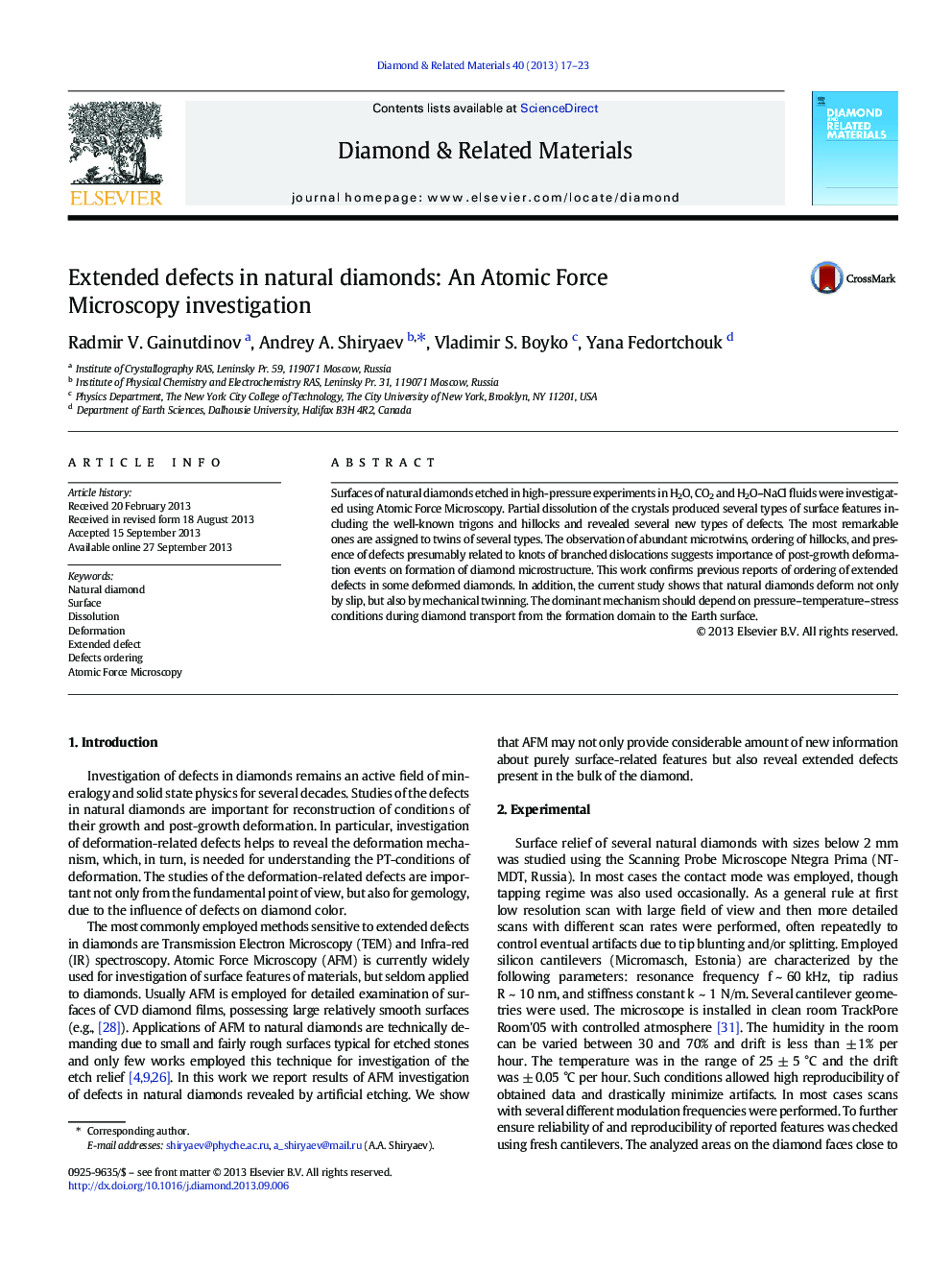| Article ID | Journal | Published Year | Pages | File Type |
|---|---|---|---|---|
| 702149 | Diamond and Related Materials | 2013 | 7 Pages |
•Atomic Force Microscopy of etched diamonds reveals numerous types of surface features.•Wedge and ISP twins retained by Peierls barriers are present in deformed diamonds.•Ordering of some extended defects in deformed diamonds is revealed by AFM and SAS.
Surfaces of natural diamonds etched in high-pressure experiments in H2O, CO2 and H2O–NaCl fluids were investigated using Atomic Force Microscopy. Partial dissolution of the crystals produced several types of surface features including the well-known trigons and hillocks and revealed several new types of defects. The most remarkable ones are assigned to twins of several types. The observation of abundant microtwins, ordering of hillocks, and presence of defects presumably related to knots of branched dislocations suggests importance of post-growth deformation events on formation of diamond microstructure. This work confirms previous reports of ordering of extended defects in some deformed diamonds. In addition, the current study shows that natural diamonds deform not only by slip, but also by mechanical twinning. The dominant mechanism should depend on pressure–temperature–stress conditions during diamond transport from the formation domain to the Earth surface.
